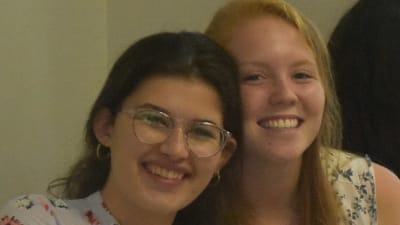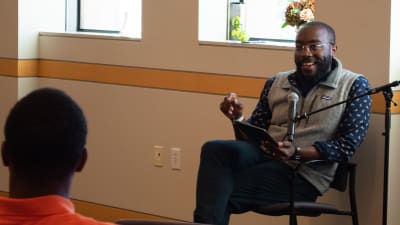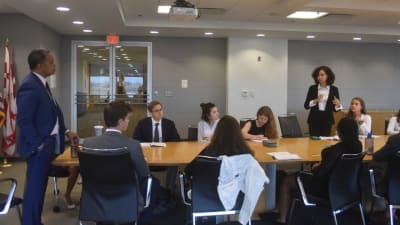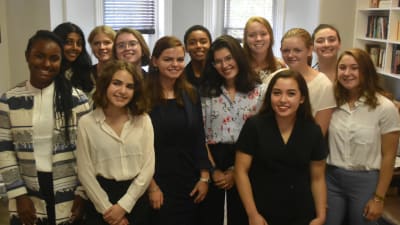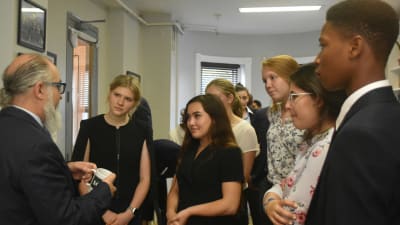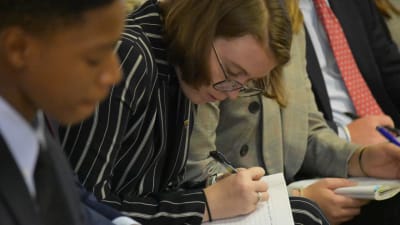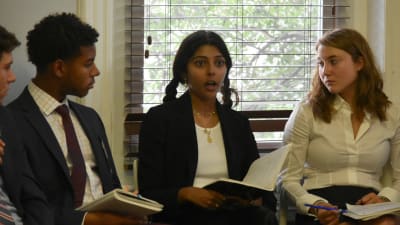Palestinians, Israelis, and prospects for peace
The Israeli-Palestinian is perhaps the quintessential disagreement of our time. It has brought American presidencies to their knees, created untold layers of disagreement, and dominated contemporary college campus debates. Is the conflict intractable? Or could new leaders (perhaps some of them SEGL graduates) with new ideas find a solution? These questions, and many others, made up our second case study of the fall.
Our students began with a presentation of Israeli-Palestinian history: the competing promises of T.E. Lawrence and the Balfour Declaration, the competing boundaries in 1948, 1967, and today, the competing visions for the future within Israel and within Palestinian leadership. Our historical account made every attempt to be unbiased, but we also told the students that many observers on both sides would want to add, subtract, or edit each PowerPoint slide we shared. Critical thinking and questioning are a must in this area of study!
(Another SEGL truism: if, after a case study, you want to hear a view different from the ones presented, say something! If there is enough interest, we can often arrange for a supplementary speaker later in the semester; if there is not enough interest, any interested student can set up her or his own meetings during a free period.)
On Wednesday afternoon we met with Ghaith al-Omari, a former top advisor to Palestinian leader Mahmoud Abbas and a negotiator (across the table from Aaron David Miller; see below!) in the 2000 Camp David peace talks (he is also the 2015 winner of the SEGL Golden Mug Award). Al-Omari, who now works with the American Task Force on Palestine and the Washington Institute for Near East Policy, shared stories and strategies from his time as a negotiator. For example, it is not enough to negotiate so that your side “wins.” You must also ensure that the speech your “opponent” gives to her people allows her to claim victory as well–otherwise, the deal will fall through. (To read a recent Wall Street Journal op-ed that al-Omari co-wrote, click here; to read an interview with him, click here.)
On Friday, we welcomed Elad Strohmeyer, spokesperson for the Israeli Embassy in DC. Strohmeyer presented an Israeli-centric view of not only the conflict, but the government’s view of the Trump Administration, the recent choice to move the U.S. embassy to Jerusalem, and other current hot topics. He also shared his passion for LGBTQ rights in Israel. (Strohmeyer is quoted in recent articles here and here.)
As you might expect, the two viewpoints were quite different, though students also expressed surprise at several key shared beliefs. Learning how to hear the other side, how to ask tough-but-respectful questions, and how to discuss the most deeply-felt of issues are key leadership traits, and also essential parts of an SEGL education.
Later this semester, we hope to hear a third view: that of longtime guest speaker (and advisor to six Secretaries of State) Aaron David Miller. Miller will help provide context for the current status of the conflict and answer questions about his time as a lead negotiator for the U.S. (for example, at the 2000 Camp David II discussions).
This week we also met with the first of several media leaders who will remind students of our opening week’s critical thinking lessons throughout the fall: Eric Schmitt is a three-time Pulitzer Prize-winning reporter for The New York Times. Among other distinctions, Schmitt was the Times‘ main contact for WikiLeaks founder Julian Assange, and he has ample experience wrestling with the ethical issues our case study raised. The students heard several intense stories, his take on the current media landscape, and his advice for news readers in the “fake news” era.
Next up: the 1994 Rwandan Genocide.
